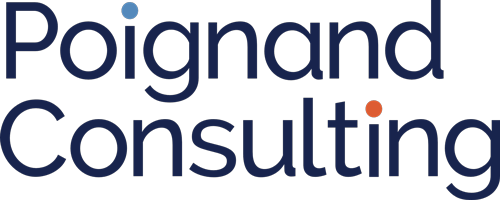
SEO stands for 'search engine optimisation'. It's a process of optimising your website content to help Google deliver more of the right people to your site. So it's essential to consider your SEO strategy and dedicate some time to getting it right.
'Organic search traffic is considered the most consistent source of quality leads across all the traffic channels available. At times, it's up to seven times more likely to convert a visitor than a traffic source you paid for.’
HubSpot, 2020
This article is intended to demystify the often confusing and seemingly black magic world of SEO. It's a simple overview of what influences SEO and the steps you can take to improve your search results.
The ingredients of effective SEO?
SEO is driven by a combination of content marketing and technical optimisation. Let's break each of these concepts down.
Content marketing
Google uses very sophisticated artificial intelligence to analyse your website content. This analysis allows them to form semantic links between your content and the user's search intent. Therefore, it's essential to both: create a series of high-quality and relevant content; and organise the content in such a way that Google's bots can understand. This will improve your chances of being discovered by the people with whom you want to connect.
There are many forms of content that can be leveraged to improve your SEO such as video, podcasts and blog articles. These should all answer specific problems and opportunities related to your target audience's needs.
You may have a strategic marketing plan and content marketing strategy. If so, you will already have identified the topics you need to cover, along with a supporting keyword strategy.
Always be conscious of the fact that Google rewards content that is organised by topic and keyword clusters. So, anytime you create content, you should think about how it fits within your overall marketing strategy and how it supports your key topic and keyword clusters. The benefit of the cluster model is that when one keyword performs well, the whole topic cluster will get a boost.
Topic
The topic is simply the main goal or problem that interests your customers.
Pillar page
The pillar page is a comprehensive resource page that covers your topic in-depth. It should sit on the top level of your website in a space that gets a lot of organic traffic. We recommend including as many of your keywords within your pillar page as possible to easily link to future blog posts. You can see that this logical organisation of content is produced to help Google's bots do their work. But more than that, it is arranging content in such a clear and logical way to people - the real audience.
Subtopic keywords
Subtopic keywords are more targeted and granular pieces of content that address a specific question within your pillar page topic. This piece of content should include a link back to your pillar page and vice versa to drive traffic to your website and close the loop for Google.
Tools to help you pick the best topics and keywords
There are many tools out there, such as HubSpot, SEMrush & Moz.
When choosing your topics and keywords, keep in mind the concepts of discovery and relevance. It's best practice to have no more than 100 keywords per topic and to have a mix of broad and niche search terms.
By this, we mean keywords with a monthly search volume of more than 100 a month (niche) and more than 1000 (broad) a month. The theory behind this is that it will be easier to rank for niche terms, but they won't attract many visitors. Conversely, high volume keywords attract lots of people, but are more challenging to achieve a ranking.
Once you have picked your topics and keywords, created your pillar pages and supporting content. It's time to make sure you're doing everything you can to give this content the best chance of success.
Technical Optimisation
Technical optimisation is a collection of rules to follow in your website design, structure and content backend.
Technical optimisation does two main things. Firstly, metadata and heading structures offer an additional layer of help to Google's bots. Secondly, efforts should focus on the performance aspects of the site that assist your site's quality score and minimise the penalties for poor user experience.
Website tips
Google prefers it when you create a clean website experience where the hyperlinks make sense and tell Google exactly what each piece of content is about. If Google isn’t sure what your content or website is about, it won’t rank your site highly.
- Make sure your content is mobile-friendly. Mobile searches have now surpassed desktop searches, so if your website or content is not mobile-friendly, your search results will be punished.
- Make sure your website is secure, and load speeds are under 5 seconds a page. Google knows how everyone hates slow page load speed, so slow sites get penalised.
- Keep page sizes to below 3MB. The heavier the site page, the slower the load.
- Multiple redirects can make your site load slower, so it's best to aim for no more than one redirect.
- Images can take a long time to load. Use responsive images to optimise your page for different screen sizes.
Ten things to consider when creating SEO friendly content
- Create a short but keyword optimised page title. The page title is the description of the webpage that shows up at the top of your browser. Page titles are one of the most effective ways to indicate what the content on a given page is to Google.
- Ensure the title is less than 70 characters; otherwise, Google will crop your title for you. Just be sure it's still easy to read and clear what the content is about. Including high-quality keywords that appear closer to the left of the page title have more emphasis applied.
- Think about your URL. The rules mentioned above to page titles also apply to the URL. The URL helps communicate content, convey site structure and describe how this page fits among the other content on your site.
- Ensure you have a single H1 tag that matches the page title. This makes it easier for Google & readers to understand your content.
- Aim for your content to have more than 300 words to make sure you've completely covered your topic. Anything less is deemed insufficient.
- Avoid orphaned content (content without inbound links).
- Add alt text to images. Images add depth to your content, so adding alt text will help Google understand them too.
- The meta description is an explanation of the page contents. It's beneficial in encouraging users to click through to your content. However, it is not a direct ranking factor in Google. Avoid duplicating your title in your meta description as it appears directly below and is unnecessary.
- Meta descriptions should be less than 155 characters to avoid being truncated.
- Use structured data to qualify rich snippets. Rich snippets give searchers more information about your content, making your page stand out from the others. To see if your page qualifies for rich snippets, run it through Google's free structured data testing tool.
- Be careful with how many form fields you have. A high bounce rate indicates your readers are "bouncing" from the webpage, and this can drop your ranking on search engines over time.
Authority
The most important thing search engines consider when ranking a given page is whether or not other people on the internet are vouching for that piece of content by linking back to it.
The right backlinks can do two great things for your website: they can drive traffic and help you rank higher in search results.
Authority is a ranking out of 100. Google, the benchmark, has an authority of 100.
Measuring authority boils down to assessing the volume and quality of the backlinks you have to your website. Have a link building strategy
If you want to improve your authority, the best way to do so is to get lots of high-quality backlinks to your website. An excellent way to approach this is to run an audit using an SEO tool by the providers above and create a BackLink list. You can then use this as a hit list for link-building opportunities. Approach sites from this list with high authority and low number of current links and encourage them to share more of your content.
Continue to produce shareable content with these sites in mind. Consider who is not on this list and should be. This means asking other websites that you respect and ideally have a high authority to share a link back to your webpage via a piece of content. This is a manual process of reaching out to site owners or engaging providers who offer backlink services.
SEO is not a dark art
SEO is a logical process built on a deep understanding of your ideal customer and how they buy. The better this is done, the higher the opportunity for top-of-page search results.
Of course, with all this said and done, it can be very time-consuming. SEO is often the first marketing task to slip, but it has such great potential. If you're struggling to find time to do this yourself, you can outsource your SEO and content marketing to an expert. It will pay off.
Find out more about Poignand Consulting's expertise in SEO and marketing aligned services.
Poignand Consulting is a strategic marketing and strategic sales consultancy that exists to unlock customer value for your business. We do this by helping enrich the customer experience at every point of contact – from the first seed of awareness to enquiry to opportunity, purchase, the post-sale relationship and repeat purchases. If you would like help with your marketing and sales, please contact us.


